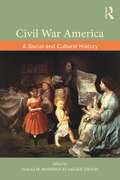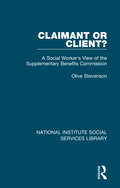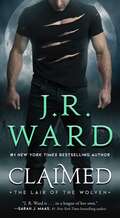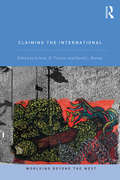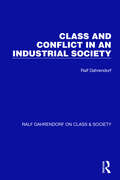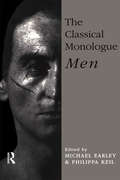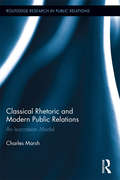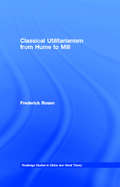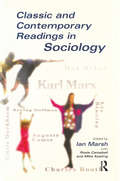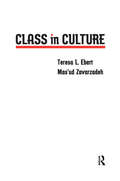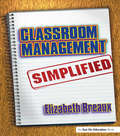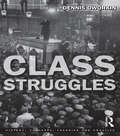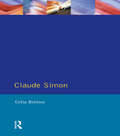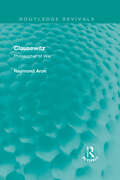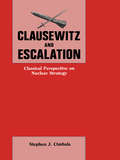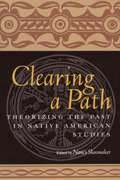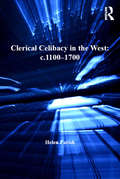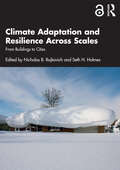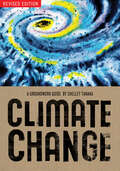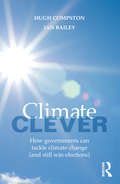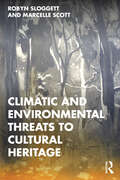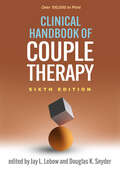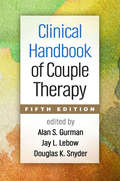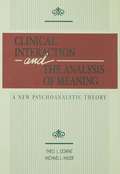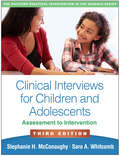Special Collections
Benetech’s Global Certified Accessible Titles
Description: Benetech’s GCA program is the first independent third-party EPUB certification to verify ebook accessibility. By creating content that is born accessible, publishers can meet the needs of all readers. Learn more: https://bornaccessible.benetech.org/
- Table View
- List View
Civil War America
by Zoe Trodd and Maggi M. MorehouseAs war raged on the battlefields of the Civil War, men and women all over the nation continued their daily routines. They celebrated holidays, ran households, wrote letters, read newspapers, joined unions, attended plays, and graduated from high school and college. Civil War America reveals how Americans, both Northern and Southern, lived during the Civil War—the ways they worked, expressed themselves artistically, organized their family lives, treated illness, and worshipped. Written by specialists, the chapters in this book cover the war’s impact on the economy, the role of the federal government, labor, welfare and reform efforts, the Indian nations, universities, healthcare and medicine, news coverage, photography, and a host of other topics that flesh out the lives of ordinary Americans who just happened to be living through the biggest conflict in American history. Along with the original material presented in the book chapters, the website accompanying the book is a treasure trove of primary sources, both textual and visual, keyed for each chapter topic. Civil War America and its companion website uncover seismic shifts in the cultural and social landscape of the United States, providing the perfect addition to any course on the Civil War.
Claimant or Client?
by Olive StevensonOriginally published in 1973, the aim of this book was to consider the relationship of a vital element in our social security system, the Supplementary Benefits Commission, to the personal social services, in particular to social work. Notions of ‘entitlement’ and ‘rights’ in means-tested benefit schemes are examined in relation to those claimants, including unsupported mothers and the so-called ‘voluntary unemployed’, who present particular difficulties to those administering the scheme. For many who claim supplementary benefit their only need is prompt, efficient financial service. For a few, their financial need is inextricably bound up with complex social and psychological difficulties. For such cases, the civil servants who administer the British Supplementary Benefits scheme need skill beyond that normally expected of such persons and their relationship with the social workers who are, or should be, in touch with such claimants becomes crucial. The book considers some of the underlying ethical issues, in particular the tension between equitable and individualised justice, involved in the exercise of discretion. It describes the structure and organisation of the Supplementary Benefits scheme and analyses the roles of officials that bear on welfare. It also examines the current situation with regard to the selection and training of officials and discusses the attitudes of social workers to officials. This work, drawing on the unique experience of the author as the first Social Work Adviser to the Supplementary Benefits Commission, was the first study of its kind to be published in this country and would be of great value to all students and teachers of social work at the time as well as to a wide readership of social scientists.
Claimed
by J.R. WardA heart-pounding new series set in the Black Dagger Brotherhood world, about a scientist fighting to save the gray wolves—and getting caught in a deadly trap herself...Lydia Susi is passionate about protecting wolves in their natural habitat. When a hotel chain develops a tract of land next to the preserve, Lydia is one of the most vocal opponents of the project—and becomes a target. One night, a shadowy figure threatens Lydia&’s life in the forest, and a new hire at the Wolf Study Project comes from out of nowhere to save her. Daniel Joseph is both mysterious, and someone she intrinsically wants to trust. But is he hiding something? As the stakes get higher, and one of Lydia&’s colleagues is murdered, she must decide how far she will go to protect the wolves. Then a shocking revelation about Daniel challenges Lydia&’s reality in ways she could never have predicted. Some fates demand courage, while others require even more, with no guarantees. Is she destined to have true love...or will a soul-shattering loss ruin her forever?
Claiming the International
by Arlene B. Tickner and David L. BlaneyThis book explores the possibilities of alternative worldings beyond those authorized by the disciplinary norms and customs of International Relations. In response to the boundary-drawing practices of IR that privilege the historical experience and scholarly folkways of the "West," the contributors examine the limits of even critical practice within the discipline; investigate alternative archives from India, the Caribbean, the steppes of Eurasia, the Andes, China, Japan and Southeast Asia that offer different understandings of proper rule, the relationality of identities and polities, notions of freedom and imaginations of layers of sovereignty; and demonstrate distinct modes of writing and inquiry. In doing so, the book also speaks about different possibilities for IR and for inquiry without it.
Class and Conflict in an Industrial Society
by Ralf DahrendorfOriginally published in England in 1959, this book evolves a new theory of conflict in industrial society. By way of illustrating and testing this theory, the book provides detailed analyses of various social phenomena. The author carries out a full critique of Marx in the light of history and modern sociology and discusses the theories of class-conflict of James Burnham, Fritz Croner and Karl Renner.
The Classical Monologue (M)
by Michael Earley and Philippa KeilThe Classical Monologue in two volumes, one for men and one for women, is a fresh selection of the best speeches from the repertoire of the classical theatre, from the Greeks to the beginning of the 20th century. These great dramatic monologues--from all periods and styles, all varied in tone and genre--make an indispensable actor's companion for auditioning, rehearsing and performing. Each monologue is accompanied by textual notes explaining any unusual vocabulary or syntax, and by commentary in which the editors offer interpretative points and practical advice in preparing the speech for performance. Both beginners and experienced actors will find The Classical Monologue a treasury of theatrical riches waiting to be released on stage.
Classical Rhetoric and Modern Public Relations
by Charles MarshThis book expands the theoretical foundations of modern public relations, a growing young profession that lacked even a name until the twentieth century. As the discipline seeks guiding theories and paradigms, rhetorics both ancient and modern have proven to be fruitful fields of exploration. Charles Marsh presents Isocratean rhetoric as an instructive antecedent. Isocrates was praised by Cicero and Quintilian as "the master of all rhetoricians," favored over Plato and Aristotle. By delineating the strategic value of Isocratean rhetoric to modern public relations, Marsh addresses the call for research into the philosophical, theoretical, and ethical origins of the field. He also addresses the call among scholars of classical rhetoric for modern relevance. Because Isocrates maintained that stable relationships must solicit and honor dissent, Marsh analyzes both historic and contemporary challenges to Isocratean rhetoric. He then moves forward to establish the modern applications of Isocrates in persuasion, education, strategic planning, new media, postmodern practices, and paradigms such as excellence theory, communitarianism, fully functioning society theory, and reflection.
Classical Utilitarianism from Hume to Mill
by Frederick RosenThis book presents a new interpretation of the principle of utility in moral and political theory based on the writings of the classical utilitarians from Hume to J.S. Mill. Discussion of utility in writers such as Adam Smith, William Paley and Jeremy Bentham is included.
Classic and Contemporary Readings in Sociology
by Ian Marsh and Mike Keating and Rosie CampbellClassic and Contemporary Readings in Sociology introduces the reader to sociological issues, theories and debates, providing extracts of primary source material, from both classical and contemporary theorists. Theorists are examined within their historical and sociological framework and the text provides an analysis of developments in sociological thought and research. The text is divided into four main sections: Part One, Origins and Concepts, surveys the history of the discipline of sociology and examines key themes which have influenced sociological theorising and investigation, in particular, social control, culture and socialisation. Parts Two and Four, Sociological Theories and Sociological Research, include a number of readings from the founding theorists and investigators, including Auguste Comte, Emile Durkheim, Karl Marx, Max Weber and Charles Booth, and also include more recent theoretical writing and research approaches. The focus on theory and research is extended by a selection of readings centred around the theme of Differences and Inequalities (Part Three); these readings provide students with examples of work from an area where sociological theorising and research has been widely applied.
Class in Culture
by Teresa L. Ebert and Mas'Ud Zavarzadeh"A gem of a book. Its topics are timely and provocative for cultural studies, sociology, English, literary theory, and education classes. The authors are brilliant thinkers and clear, penetrating writers." -Peter McLaren, UCLA, author of Capitalists and Conquerors: A Critical Pedagogy Against Empire Class in Culture demonstrates the power of moving beyond cultural politics to a deeper class critique of contemporary life. Making a persuasive case for class as the material logic of culture, the book is written in a double register of short critiques of life practices-from food and education to race, stem-cell research, and abortion-as well as sustained critiques of such theoretical discourses as ideology, consumption, globalization, and 9/11. Surpassing the orthodoxies of cultural studies, Class in Culture makes surprising connections among seemingly unrelated cultural events and practices and offers a groundbreaking and complex understanding of the contemporary world.
Classroom Management Simplified
by Elizabeth BreauxThe tips in this book are accompanied by typical classroom scenarios and step-by-step instructions on how to implement them. Also included are actual dialogues to use with your students.
Class Struggles
by Dennis L. DworkinIn the 1960s and 1970s the study of history and sociology was heavily influenced by Marxism and theories of class. But the collapse of Communism and significant changes in culture and society threw the study of class into crisis. Its most basic premises were called into question. More recently accelerating globalisation, proliferating multinational corporations and unbridled free-market capitalism have given the study of class a new significance and caused historians and sociologists to revisit the debate.This book looks at the changes that caused the crisis in the study of class and shows how new, vibrant theories have appeared that will drive forward our understanding of history and sociology.
Claude Simon
by Celia BrittonThis is a major study of the Nobel prize-winning French novelist Claude Simon. Simon is a complex figure: for all that he writes in a distinctively modern fictional tradition (exemplified by Proust, Joyce, Beckett and Robbe-Grillet), his novels contain strong elements of visual representation alongside a very different king of free-floating, anti-realist writing.
Clausewitz
by Raymond AronIn this edition, originally published in 1983, the late Professor Raymond Aron, one of France’s most distinguished social scientists, presented a major re-evaluation of Carl von Clausewitz, ‘the genius of war’. He sees in Clausewitz a political philosopher of major importance, whose impact and significance permeate many facets of modern society. Yet Clausewitz’s reputation was entirely posthumous, for his great work, On War, was published after his death, and in his lifetime he achieved only a limited reputation as a military thinker and planner. Even today he is more often quoted than closely read. Aron begins by elucidating the complexity of Clausewitz’s thought and by describing his main ideas. He gives an account of the successive phases in the development of On War, and traces the different interpretations of Clausewitz’s doctrine in Germany, in France and in Soviet Russia. Finally, Aron analyses many aspects of the present world using the concepts of Clausewitz, and is therefore able to examine such modern phenomena as the theory of the nuclear deterrent and ‘total war’ in Clausewitzian terms. This is a book of piercing insights by a writer of world-wide reputation, who used the Clausewitz world-view as a means of political analysis. It is thus still of great importance and interest to contemporary historians and to all who are concerned with military and political affairs.
Clausewitz and Escalation
by Stephen J. CimbalaPublished in 1991, Clausewitz and Escalation is a valuable contribution to the field of Military & Strategic Studies.
Clearing a Path
by Nancy ShoemakerClearing a Path offers new models and ideas for exploring Native American history, drawing from disciplines like history, anthropology, and creative writing making this a must-read for anyone interested in the history of indigenous peoples.
Clerical Celibacy in the West
by Helen ParishThe debate over clerical celibacy and marriage had its origins in the early Christian centuries, and is still very much alive in the modern church. The content and form of controversy have remained remarkably consistent, but each era has selected and shaped the sources that underpin its narrative, and imbued an ancient issue with an immediacy and relevance. The basic question of whether, and why, continence should be demanded of those who serve at the altar has never gone away, but the implications of that question, and of the answers given, have changed with each generation. In this reassessment of the history of sacerdotal celibacy, Helen Parish examines the emergence and evolution of the celibate priesthood in the Latin church, and the challenges posed to this model of the ministry in the era of the Protestant Reformation. Celibacy was, and is, intensely personal, but also polemical, institutional, and historical. Clerical celibacy acquired theological, moral, and confessional meanings in the writings of its critics and defenders, and its place in the life of the church continues to be defined in relation to broader debates over Scripture, apostolic tradition, ecclesiastical history, and papal authority. Highlighting continuity and change in attitudes to priestly celibacy, Helen Parish reveals that the implications of celibacy and marriage for the priesthood reach deep into the history, traditions, and understanding of the church.
Climate Adaptation and Resilience Across Scales
by Nicholas B. RajkovichClimate Adaptation and Resilience Across Scales provides professionals with guidance on adapting the built environment to a changing climate. This edited volume brings together practitioners and researchers to discuss climate-related resilience from the building to the city scale. This book highlights North American cases that deal with issues such as climate projections, public health, adaptive capacity of vulnerable populations, and design interventions for floodplains, making the content applicable to many locations around the world. The contributors in this book discuss topics ranging from how built environment professionals respond to a changing climate, to how the building stock may need to adapt to climate change, to how resilience is currently being addressed in the design, construction, and operations communities. The purpose of this book is to provide a better understanding of climate change impacts, vulnerability, and resilience across scales of the built environment. Architects, urban designers, planners, landscape architects, and engineers will find this a useful resource for adapting buildings and cities to a changing climate.
Climate Change Revised Edition
by Shelley TanakaRevised and updated edition Scientists have been warning the world about global warming for almost three decades. But the rest of us are only now starting to get the message. The planet is warming at an unusually rapid rate, and this warming is largely being caused by human activity. Shrinking glaciers, thawing permafrost, erratic weather and threatened freshwater supplies are already affecting the lives of people around the globe, and the worst is yet to come. The crisis is real, but there is little consensus about how to confront the problem, not only because the science is complex, but because the economic, political and social implications of taking action are vast, far-reaching and unsettling. And despite the urgency, climate change deniers seem to be more vocal than ever. This revised and updated edition includes the most recent scientific findings while addressing the main issues. What is happening, and how did we get here? What is the basic science behind climate change? What is going to happen in the future? And, most important, why is it so hard for us to accept what is going on, and what can we do about it? Charts, maps, a glossary, an index and suggestions for further reading accompany the text.
Climate Clever
by Ian Bailey and Hugh CompstonWhy, despite two decades of climate policy, have affluent democracies made so little progress in cutting greenhouse gas emissions? We know that there are ways of doing this that are both practical and affordable. It is politics that is the problem. Stringent climate policies may lead companies to redirect investment elsewhere, or lead voters to retaliate at the ballot box. There are many political obstacles to stronger action. What can be done? Based on an analysis of the logic of policy making, plus observation of recent developments in climate politics, this book identifies a broad range of political strategies that are available to governments that wish to take more effective action against climate change while avoiding serious political damage. Separate chapters deal with strategies relating to unilateral action, persuasion, political exchange, and changing the terms of political exchange. This is the first book-length study of political strategy and climate change and will be of interest not only to policymakers but also to experts and activists looking to formulate politically realistic policy proposals, and scholars and students of politics and environmental studies.
Climatic and Environmental Threats to Cultural Heritage
by Robyn Sloggett and Marcelle ScottClimatic and Environmental Threats to Cultural Heritage examines the challenges that environmental change, both sudden and long-term, poses to the preservation of cultural material. Acknowledging the diversity of human cultural heritage across collecting institutions, heritage sites and communities, the book highlights how, in Australia, Southeast Asia and the Pacific, the quest to preserve such precious knowledge relies on records and narratives being available to inform decisions now and into the future. Bringing together a diverse range of stakeholders who have an interest in – and responsibility for – the care of cultural heritage material and places of cultural heritage value, the book explores their thinking on and actions in relation to issues of climate change and environmental risk. Sloggett and Scott highlight the stakeholders’ shared interest in drawing on their expertise to meet the challenges that environmental change brings to the future of our cultural heritage and our cultural identity. Based on the understanding that this global challenge requires local, national and international co‐operation, the book also considers how local knowledge can have international application. Climatic and Environmental Threats to Cultural Heritage will be of interest to those engaged in the study of heritage, conservation, archaeology, archives, anthropology, climate change and the environment. It will also be useful to practitioners and others attempting to understand the effect of environmental change on cultural heritage around the globe.
Clinical Handbook of Couple Therapy
by Jay L. Lebow and Douglas K. SnyderNow in a significantly revised sixth edition with 70% new material, this comprehensive handbook has introduced tens of thousands of practitioners and students to the leading forms of couple therapy practiced today. Prominent experts present effective ways to reduce couple distress, improve overall relationship satisfaction, and address specific relational or individual problems. Chapters on major approaches follow a consistent format to help readers easily grasp each model's history, theoretical underpinnings, evidence base, and clinical techniques. Chapters on applications provide practical guidance for working with particular populations (such as stepfamily couples and LGBT couples) and clinical problems (such as intimate partner violence, infidelity, and various psychological disorders). Instructive case examples are woven throughout. New to This Edition *Chapters on additional clinical approaches: acceptance and commitment therapy, mentalization-based therapy, intergenerational therapy, socioculturally attuned therapy, and the therapeutic palette approach. *Chapters on sexuality, older adult couples, and parents of youth with disruptive behavior problems. *Chapters on assessment and common factors in couple therapy. *Chapters on cutting-edge special topics: relationship enhancement, telehealth interventions, and ethical issues in couple therapy.
Clinical Handbook of Couple Therapy, Fifth Edition
by Alan S. Gurman and Jay L. Lebow and Douglas K. SnyderRegarded as the authoritative reference and text, this handbook presents the most effective, widely studied approaches to couple therapy. The distinguished coeditors bring together other leading experts, most of whom developed the approaches they describe. Adhering closely to a uniform structure to facilitate study and comparison, chapters cover the history, theoretical and empirical underpinnings, and techniques of each model. The volume also describes cutting-edge applications for particular relationship contexts (such as blended families, LGBT couples, and separated couples) and clinical problems (such as partner aggression, psychological disorders, and medical issues). New to This Edition *Chapters on interpersonal neurobiology and intercultural relationships. *Chapters on couple therapy for PTSD, functional analytic couple therapy, and the integrative problem-centered metaframeworks approach. *Many new authors; extensively revised with the latest theory and research. See also Clinical Casebook of Couple Therapy, edited by Alan S. Gurman, which presents in-depth illustrations of treatment.
Clinical Interaction and the Analysis of Meaning
by Theo L. Dorpat and Michael L. MillerClinical Interaction and the Analysis of Meaning evinces a therapeutic vitality all too rare in works of theory. Rather than fleeing from the insights of other disciplines, Dorpat and Miller discover in recent research confirmation of the possibilities of psychoanalytic treatment. In Section I, "Critique of Classical Theory," Dorpat proposes a radical revision of the notion of primary process consonant with contemporary cognitive science. Such a revised conception not only enlarges our understanding of the analytic process; it also provides analysis with a conceptual language that can articulate meaningful connections with a growing body of empirical research about the development and nature of human cognition. In Section II, "Interactional Theory," Miller reverses the direction of inquiry. He begins with the literature on cognitive development and functioning, and proceeds to mine it for concepts relevant to the clinical process. He shows how a revised understanding of the operation of cognition and affect can impart new meaning to basic clinical concepts such as resistance, transference, and level of psychopathology. In Section III, "Applications and Exemplifications," Dorpat concludes this exemplary collaboration by exploring select topics from the standpoint of his and Miller's new psychoanalytic theory. At the heart of the authors' endeavor it "meaning analysis," a concept that integrates an up-to-date model of human information processing with the traditional goals of psychoanalysis. The patient approaches the clinical encounter, they argue, with cognitive-affective schemas that are the accumulatice product of his life experience to date; the manifold meanings ascribed to the clinical interaction must be understood as the product of these schemas rather than as distortions deriving from unconscious, drive-related fantasies. The therapist's goal is to make the patient's meaning-making conscious and thus available for introspection.
Clinical Interviews for Children and Adolescents, Third Edition
by Sara A. Whitcomb and Stephanie H. McConaughyWidely recognized as an authoritative resource, this book has been revised and updated with the latest research and techniques, including new material on telehealth services. Guidelines are provided for conducting thorough, developmentally informed interviews with K–12 students--and their parents and teachers--for multimethod assessment and intervention planning. Extensive case examples illustrate how to elicit information about school functioning, peer relations, emotional and behavioral difficulties, family situations, and adolescent concerns. Two guest authors have contributed chapters on suicide and violence risk assessments. In a convenient large-size format, the book includes over a dozen reproducible interviewing tools; purchasers get access to a Web page where they can download and print the reproducible materials. New to This Edition *Incorporates the latest information on bullying, cyberbullying, and victimization; sexual- and gender-minority youth; social media and smartphone use; and adolescent substance use. *Discusses strategies, tips, and caveats for conducting virtual interviews. *Expanded coverage of cultural and linguistic biases in assessment and how practitioners can build multicultural competence. *Revised and expanded reproducible tool: Semistructured Student Interview--Second Edition. This book is in The Guilford Practical Intervention in the Schools Series, edited by Sandra M. Chafouleas.
